"Adhere to what you love, love what you adhere to." Shu Qiuhong, a 24-year-old girl who started her own business in Ji Nan, then interpreted these words with practical actions.
Her hometown is far away in Tongren, Guizhou, and she is the first college student out of the village. She has a deep-rooted love for Chinese traditional costumes because she was nurtured by her grandmother's production of Miao embroidery and Miao silver since she was a child.
In order to promote traditional culture and persist in her hobby, Shu resolutely quit her job as a teacher and started a long entrepreneurial journey against the pressure of her family.
Today, she has her own hanfu store in Jinan, and through continuous learning of traditional culture, she makes ancient hair ornaments with complicated procedures by hand. "My goal is to make Chinese traditional hair ornaments and costumes loved by more people, and I hope they will go out of the country and into the world."

The store that carries the girl's dream of Hanfu
Shu Qiuhong's store was opened in a shopping mall, although it did not look impressive, after the entrance is another scene: a wide range of colors and patterns of hanfu, exquisite embroidery of cloth shoes let people can not take their eyes off.
Currently, the main business of this small store is to make hairpins, sell hanfu, attend events, provide hanfu makeup and take photos, and secondly, teach plant dyeing methods such as tie-dye and batik." She said.
Read ancient books to restore the traditional hair accessories
Apart from matching hanfu and designing makeup, Shu is also good at making hanfu accessories by hand.
Her dresser drawers are decorated with various styles of handmade hairpins, including old material ware made of glazed pieces that tinkle when walking; rabbit hairpins made of Rong Hua, with red cherries in the mouth of the fluffy rabbit; and peony hairpins made of Chan Hua, with gold silk threads that faintly shine in the light.
When it comes to the process of making hairpins, Shu can't stop talking about it: "There are many kinds of hairpins, but I am best at the complicated process of Chan Hua (wrapping flowers) hairpin and the Rong Hua (velvet flower) hairpin.
There are five steps in the production of the Chan Hua hairpin: drawing, cutting the mold, placing the 0.3mm copper wire on the paper mold and winding it with the wire, combining it, and finally adjusting the flower shape. The degree of difficulty of the flower varies, and the production time is not fixed, generally 3 hours to complete."
Shu said that the production process of Rong Hua hairpin to be more tedious, also needs five steps. "First comb the velvet, and then tied to the copper wire on the velvet, then cut the velvet, tip, combination adjustment." Shu said, while gesturing up with his hands.
"Each of my hairpins is polished with care and they are like my children. I hope that through them, more people will understand how beautiful Chinese traditional costumes are." Shu says that each dynasty has different characteristics in terms of accessories and clothing, and when studying what each dynasty wore, she often feels like she has literally traveled back in time to that dynasty.
Shu Qiuhong's bookshelves are lined with stacks of books, most of which are related to hanfu, all of which have obvious traces of flipping through and marking. "When I was studying education at university, I spent most of my time reading these books in addition to studying professional courses."
"China's traditional culture has a long history and needs to be studied constantly, and must be learned all the time." Shu said that nowadays she also goes into the non-heritage classroom to explain Chinese costume culture to the children, "During the previous summer camp, I taught the children to make handmade works such as hairpins and also took them to sell their works, and I think the children gained a lot in the process."
Quit teaching and switch to the traditional clothing industry
Talking about the original intention of starting a business, Shu Qiuhong is full of emotions.
"I grew up watching my grandmother do Miao embroidery and Miao silver, and I really like these traditional crafts. After I came to school in Jinan, I often visited some old craftsmen, and with the hanfu club at school, I gradually liked it more and more."
In the early stage of the business, all aspects need Shu to coordinate, "Pressure from competitors, family factors, made me want to give up." This entrepreneurial path was questioned by many people, but she insisted on turning the idea into reality. "I feel very lucky to be able to make a career out of what I love, although it is very busy and tired, but I feel especially satisfied."
"Now my business is much better and I have my own store. Through this industry also met a lot of girls who love ancient culture. I will continue to stick to this job in the later stage, and my goal is to make our traditional Chinese costumes known to more people and liked by more people."
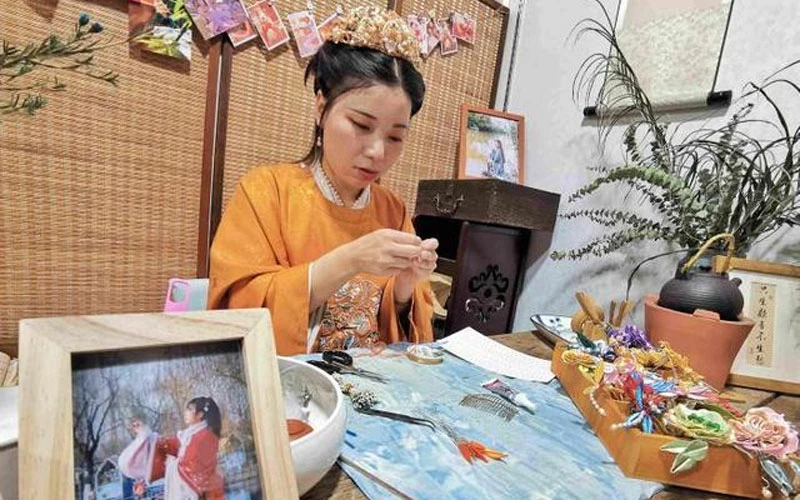
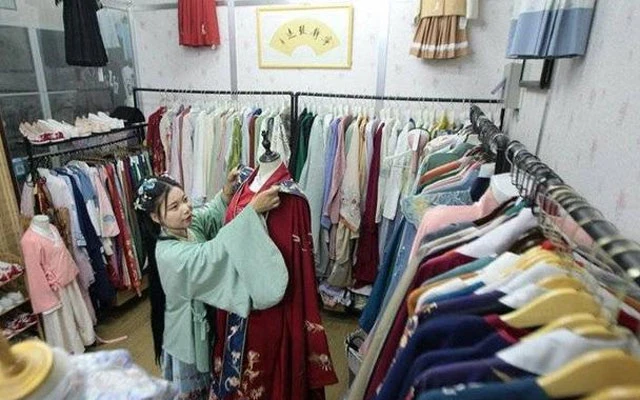
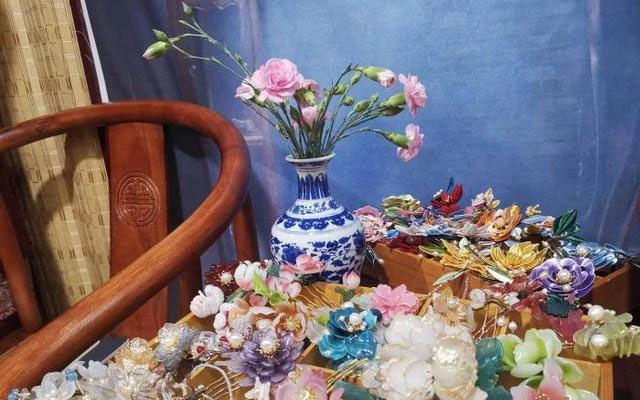

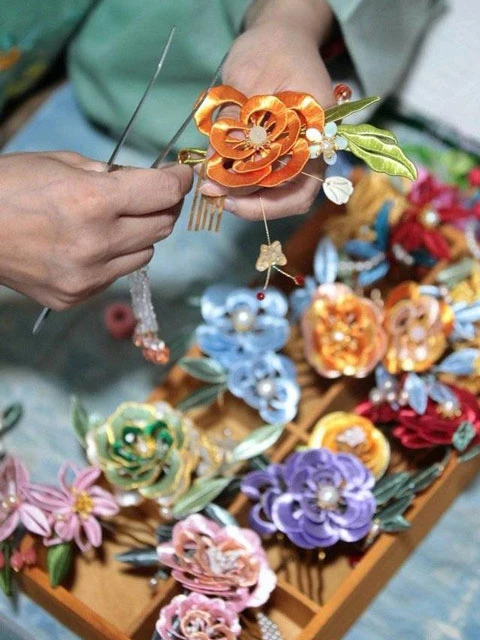
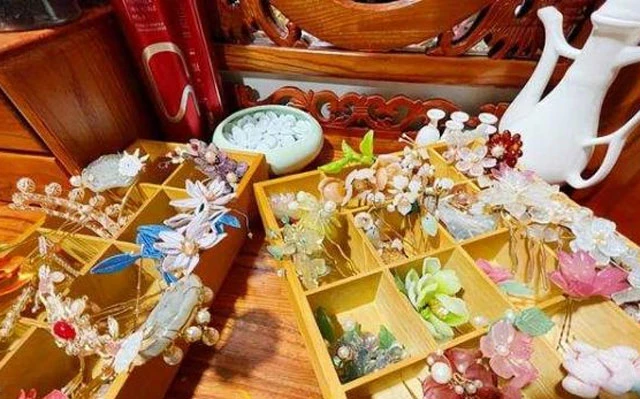
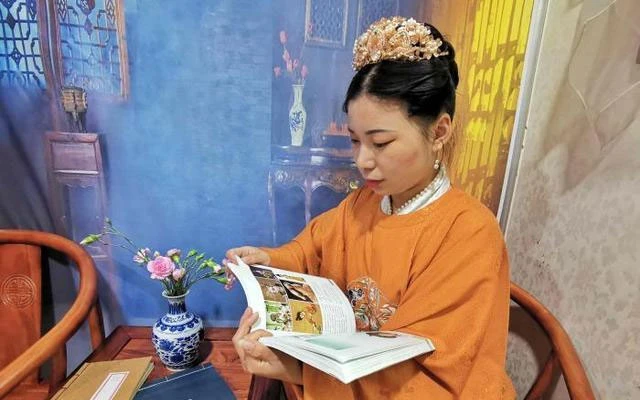

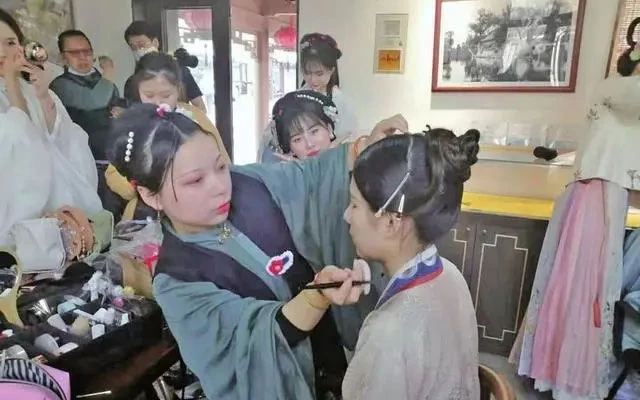
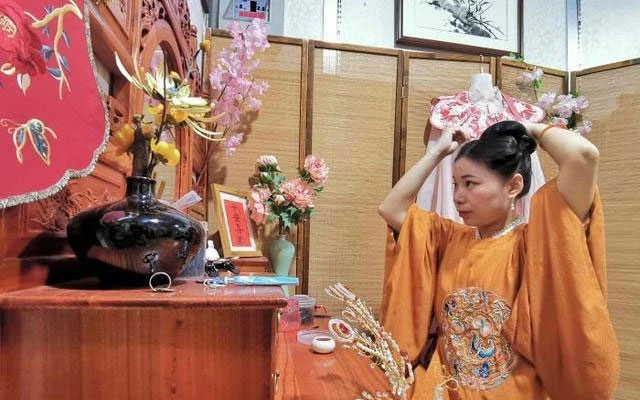

Where can we find her shop please? 🥺
Wow bakat yang luar biasa, segalanya jadi indah